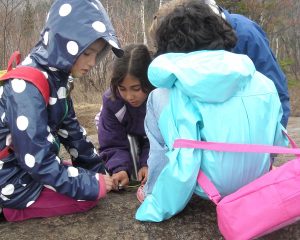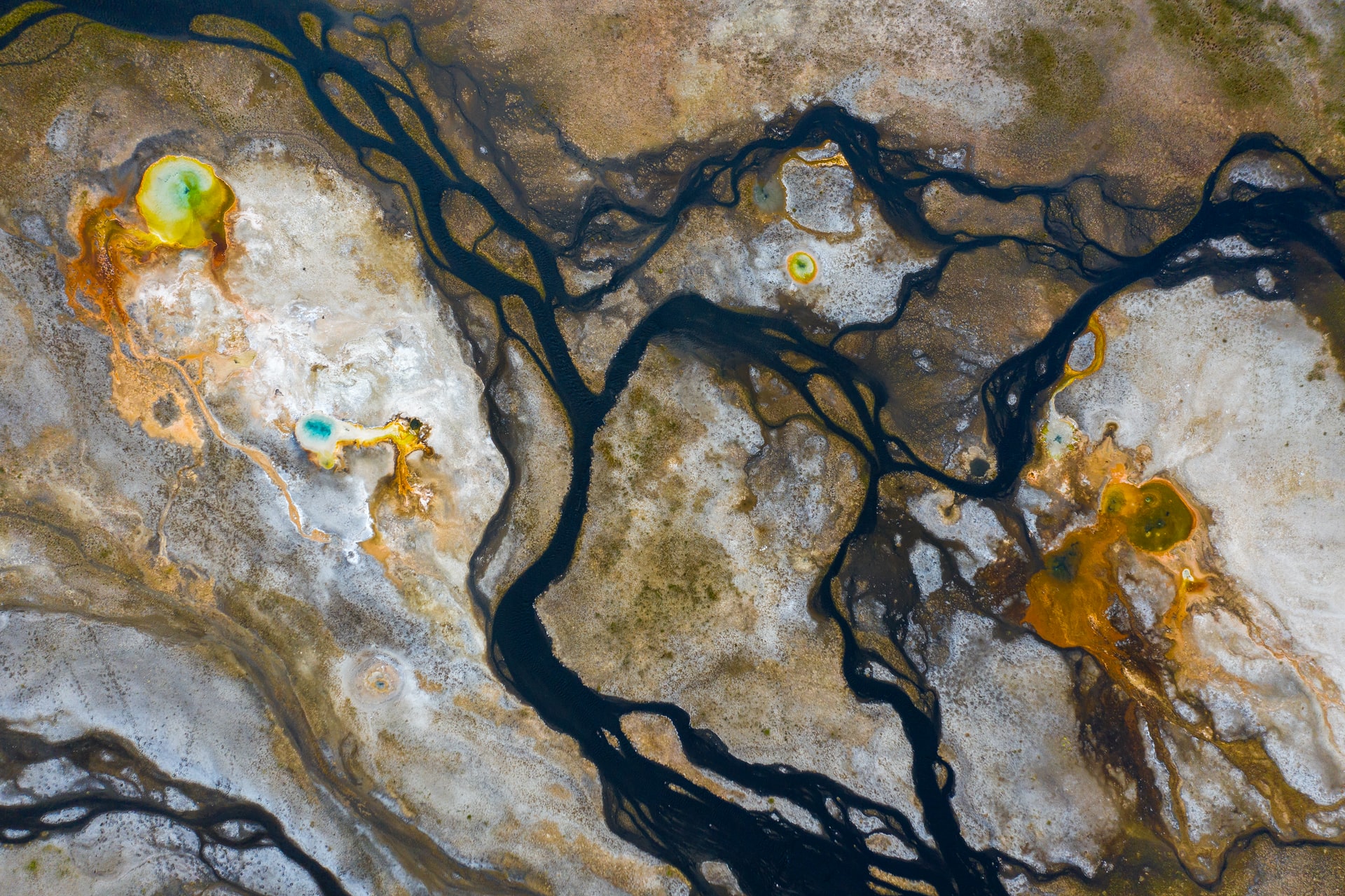By Wolf Ridge Naturalist
“Look at my rock! It’s so shiny!” “Well, mine looks like it has a face in it!” Sounds of future rock collectors can be heard at the beginning of every Geology class now that the lesson plan has been rewritten.
After spending minutes agonizing over the choice of which rock is the perfect pocket rock, students are able to utilize our new portable geology kits to determine their pocket rock’s properties such as hardness and luster.


After focusing on small rocks, the class shifts to a larger view as students figure out how rock properties and plate tectonics affect the landscape around them. Of course, this part of class wouldn’t be complete without standing atop of Marshall Mountain talking about the different bedrock types in the area and how differential erosion of the various kinds of bedrock helped create the mountain. If that sentence confused you, you’re not alone, but to understand differential erosion, you can do the same activity all of our students do. Simply lick a chocolate chip cookie and notice how the cookie part disappears a lot faster than the chocolate chip part (or more realistically, eat the chocolate chip cookie and just pretend that you were patient enough to lick it). Differential erosion works the same way with bedrock, glaciers, and rain! After leaving Marshall Mountain, students practice their new-found bedrock map interpretation skills as they overlook Sawmill Creek Valley.
When asked why we changed the class, our Geology class manager, Carrie, said, “We asked ‘What is the unique earth science story that kids can see, touch, and explore on our campus? What tools and experiences will challenge them to think like geologists? How can the lesson help students ask good questions and discover geologic principles?’ The result is a new focus on landscapes that is better aligned with current science standards, while also allowing us to cover more elementary concepts like the rock cycle with younger children.”
We wanted kids to explore Wolf Ridge’s geologic features – to really focus their attention on Marshall Mountain, Sawmill Creek Valley, and the wonderful examples of exposed bedrock on campus. springboard to explore geologic principles, we refocused class activities on the landforms and rocks that are directly available at Wolf Ridge. New activities give students skills they can take home and use to explore their own landscapes. The class is now also better aligned with Minnesota Earth Science Standards, with variations for grades 4 – high school.
If you want to do some more geology exploration on your own, you can check out an interactive MN bedrock map or find some more educational resources on the Earth Science Week website. Also, you should definitely read my personal favorite book, Everybody Needs a Rock by Byrd Baylor.

